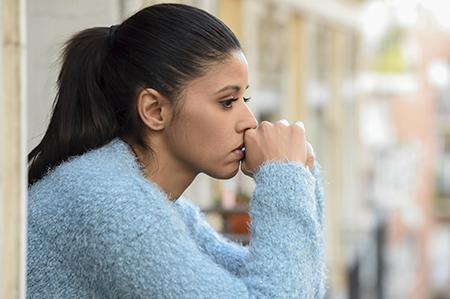As the days get shorter, the amount of sunlight decreases and, for much of the country, it is dark by dinnertime.

Combine that with the stress, fatigue and hustle and bustle of the holiday season, and it’s no wonder that seasonal depression, known as Seasonal Affective Disorder (SAD), is most common from November through February.
The combination of lack of light and the passing of the holidays can be a potent, negative combination. Biological rhythms are off because of less sunlight, decreased serotonin levels, increased melatonin levels and a feeling of letdown after the holidays. For some, it can even be a feeling of remorse when they realize how much money they spent on gifts. This can make people feel lethargic and without a sense of purpose, and snowball into depression.
The Signs and Symptoms of SAD
According to the National Institute of Mental Health, major depression may include symptoms like loss of interest in things you previously enjoyed, changes in appetite or weight, sleep problems and feeling depressed most of the day, nearly every day. Those with SAD may experience additional symptoms including the following:
- Oversleeping (hypersomnia)
- Overeating, particularly with a craving for carbohydrates
- Weight gain
- Social withdrawal (feeling a need to “hibernate”)
Find Help When You Need It
While many people experience milder symptoms associated with seasonal mood changes, it’s important to talk to your doctor if your symptoms become more serious. For instance, if you notice changes that are making it difficult to go about your daily tasks or if your feelings are changing the way you think and feel.
Combating the Seasonal Blues
For those with milder symptoms associated with seasonal changes, here are some things you can do to help chase the winter blues.
Stay Connected to People
A connection with people is important, be it in person or online with friends and loved ones across the country. Look up groups or clubs in your community that are participating in sports or leisure, such as walking, running or biking clubs. In poor weather, consider walking with friends at your local mall, where you can window shop and get your steps in as well.
Exercise
Moving more can help you feel better and potentially improve your mood. Something as simple as walking is an excellent way to keep your body in motion. Be sure to head outside when the weather permits. (Check with your doctor before starting any new fitness routine.)
Let the Sunshine In
Decreased exposure to sunlight can impact your mood. Open the curtains and bask in the warmth of the sun for 15-20 minutes, or consider purchasing an artificial sunlight lamp.
Find a Hobby
Explore a new hobby or recommit to an activity you once enjoyed but have spent less time on through the years. Explore online and community resources to take a class or learn a new language or other skill.
